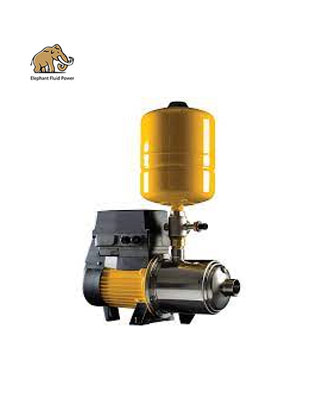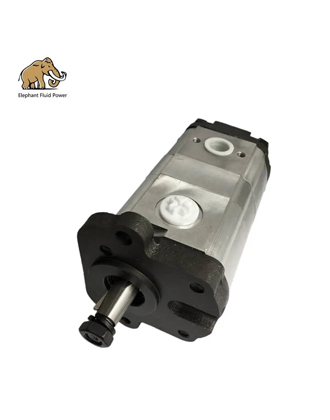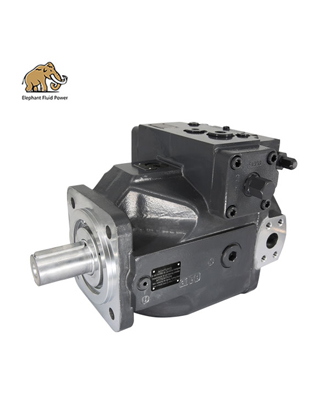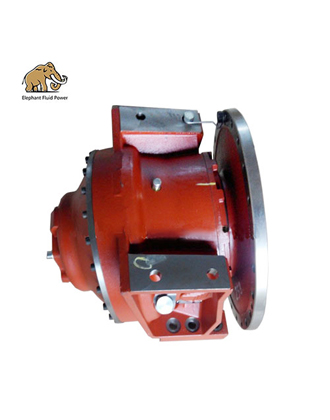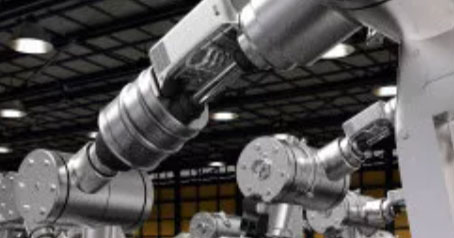When it comes to hydraulic systems, the efficiency and performance of machinery rely heavily on the intricate components that make up the system. One such crucial component is the hydraulic vane pump, a device that plays a vital role in various industries. In this article, we will delve into the world of hydraulic vane pump parts, exploring their functions, importance, and how they contribute to the overall operation of hydraulic systems.
Hydraulic Vane Pump: An Overview
Before diving into the details of its components, let's first understand what a hydraulic vane pump is. In simple terms, it is a type of positive-displacement pump used to transfer hydraulic fluids. Its operation involves using a series of vanes that are pushed in and out of the pump's rotor by a cam ring. This mechanical action creates suction and pressure, allowing the pump to move fluids efficiently. Now, let's dissect the hydraulic vane pump parts that make this process possible.
Cam Ring
The cam ring is another crucial component that significantly impacts the operation of the hydraulic vane pump. It surrounds the rotor and features a contoured inner surface. As the rotor spins, the vanes are forced in and out by the cam ring's shape. This mechanical interaction ensures that the volume of the chambers formed between the vanes remains consistent, resulting in efficient fluid displacement. The cam ring's precise design is essential for achieving optimal pump performance. The pump housing encases the rotor, vanes, and cam ring. It serves multiple purposes: providing structural support, maintaining the alignment of components, and containing the pumped fluid. The housing features inlet and outlet ports that allow fluid to enter and exit the pump. Additionally, the housing's interior is designed to accommodate the movement of the vanes and rotor while minimizing fluid leakage. Fluid enters the hydraulic vane pump through the inlet port. This is a strategically positioned opening in the pump housing that allows the pump to draw in fluid. The inlet port's size and placement are critical for ensuring a steady flow of fluid into the pump's chambers. Once the fluid is pressurized by the pump's action, it exits through the outlet port, ready to be directed towards its intended application.
Shaft and Drive Mechanism
The shaft connects to the rotor and provides the rotational motion needed for the pump's operation. It is usually driven by an external power source, such as an electric motor or an internal combustion engine. The drive mechanism must ensure a consistent and precise rotation of the shaft and rotor, which in turn guarantees the synchronized movement of the vanes and the cam ring. Each of these hydraulic vane pump parts plays a crucial role in the overall functionality and efficiency of the pump. The precision engineering that goes into the design and manufacturing of these components ensures that the pump can handle high pressures, deliver consistent flow rates, and withstand the demands of various applications. Whether used in industrial machinery, automotive systems, or even aircraft, hydraulic vane pumps are relied upon for their robust performance.
Maintenance and Troubleshooting
Understanding the individual components of a hydraulic vane pump is essential for effective maintenance and troubleshooting. Regular inspection of the vanes for wear, checking the cam ring for any irregularities, and ensuring the pump housing remains free from leaks are all critical tasks. Additionally, monitoring the fluid quality and temperature can help identify potential issues before they escalate, prolonging the pump's lifespan and preventing costly downtime.
In the realm of hydraulic systems, the significance of hydraulic vane pump parts cannot be overstated. From the rotor and vanes to the cam ring and housing, each component plays a vital role in achieving efficient fluid displacement and maintaining optimal pump performance. As industries continue to rely on hydraulic systems for a wide range of applications, a solid understanding of these components becomes invaluable for engineers, technicians, and anyone involved in the operation and maintenance of hydraulic machinery.
 French
French
 Portuguese
Portuguese
 Russian
Russian
 German
German
 Spanish
Spanish
 Japanese
Japanese
 Korean
Korean
 Irish
Irish
 Greek
Greek
 Turkish
Turkish
 Italian
Italian
 Danish
Danish
 Romanian
Romanian
 Indonesian
Indonesian
 Czech
Czech
 Afrikaans
Afrikaans
 Swedish
Swedish
 Polish
Polish
 Basque
Basque
 Catalan
Catalan
 Esperanto
Esperanto
 Hindi
Hindi
 Lao
Lao
 Albanian
Albanian
 Amharic
Amharic
 Armenian
Armenian
 Azerbaijani
Azerbaijani
 Belarusian
Belarusian
 Bengali
Bengali
 Bosnian
Bosnian
 Bulgarian
Bulgarian
 Cebuano
Cebuano
 Chichewa
Chichewa
 Corsican
Corsican
 Croatian
Croatian
 Dutch
Dutch
 Estonian
Estonian
 Filipino
Filipino
 Finnish
Finnish
 Frisian
Frisian
 Galician
Galician
 Georgian
Georgian
 Gujarati
Gujarati
 Haitian
Haitian
 Hausa
Hausa
 Hawaiian
Hawaiian
 Hebrew
Hebrew
 Hmong
Hmong
 Hungarian
Hungarian
 Icelandic
Icelandic
 Igbo
Igbo
 Javanese
Javanese
 Kannada
Kannada
 Kazakh
Kazakh
 Khmer
Khmer
 Kurdish
Kurdish
 Kyrgyz
Kyrgyz
 Latin
Latin
 Latvian
Latvian
 Lithuanian
Lithuanian
 Luxembourg
Luxembourg
 Macedoniar
Macedoniar
 Malagasy
Malagasy
 Malay
Malay
 Malayalam
Malayalam
 Maltese
Maltese
 Maori
Maori
 Marathi
Marathi
 Mongolian
Mongolian
 Burmese
Burmese
 Nepali
Nepali
 Norwegian
Norwegian
 Pashto
Pashto
 Persian
Persian
 Punjabi
Punjabi
 Serbian
Serbian
 Sesotho
Sesotho
 Sinhala
Sinhala
 Slovak
Slovak
 Slovenian
Slovenian
 Somali
Somali
 Samoan
Samoan
 Scots Gaelic
Scots Gaelic
 Shona
Shona
 Sindhi
Sindhi
 Sundanese
Sundanese
 Swahili
Swahili
 Tajik
Tajik
 Tamil
Tamil
 Telugu
Telugu
 Thai
Thai
 Ukrainian
Ukrainian
 Urdu
Urdu
 Uzbek
Uzbek
 Vietnamese
Vietnamese
 Welsh
Welsh
 Xhosa
Xhosa
 Yiddish
Yiddish
 Yoruba
Yoruba
 Zulu
Zulu

